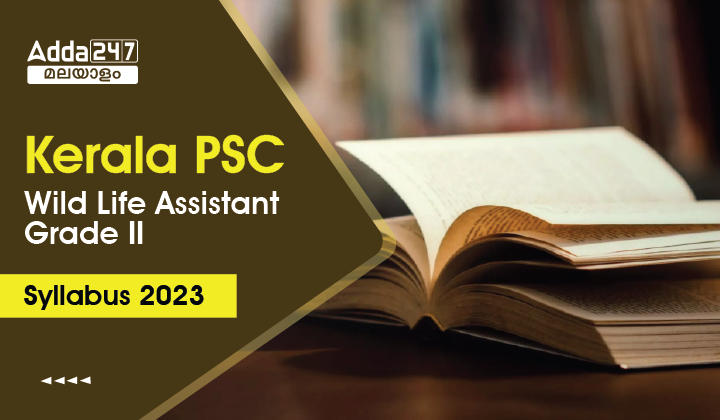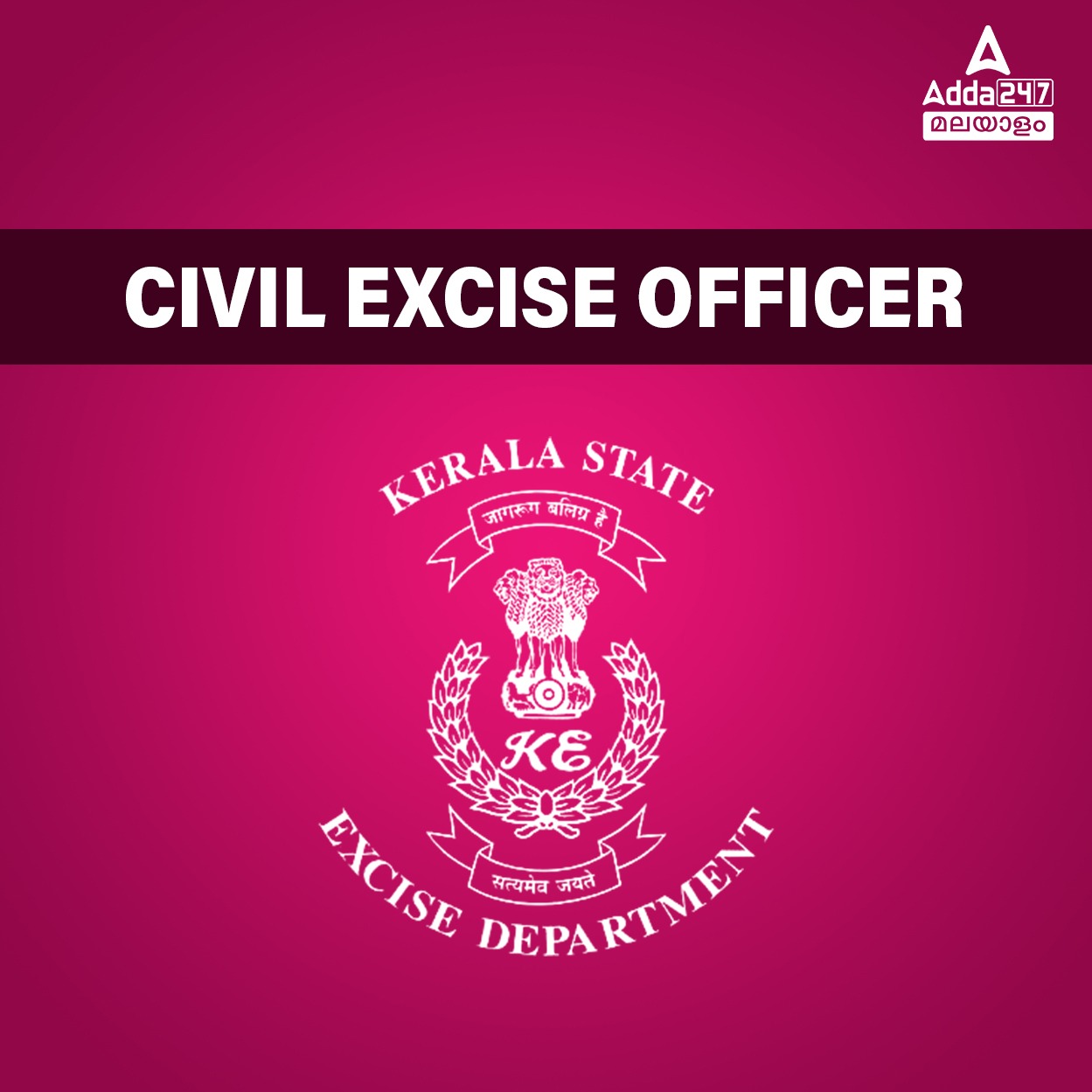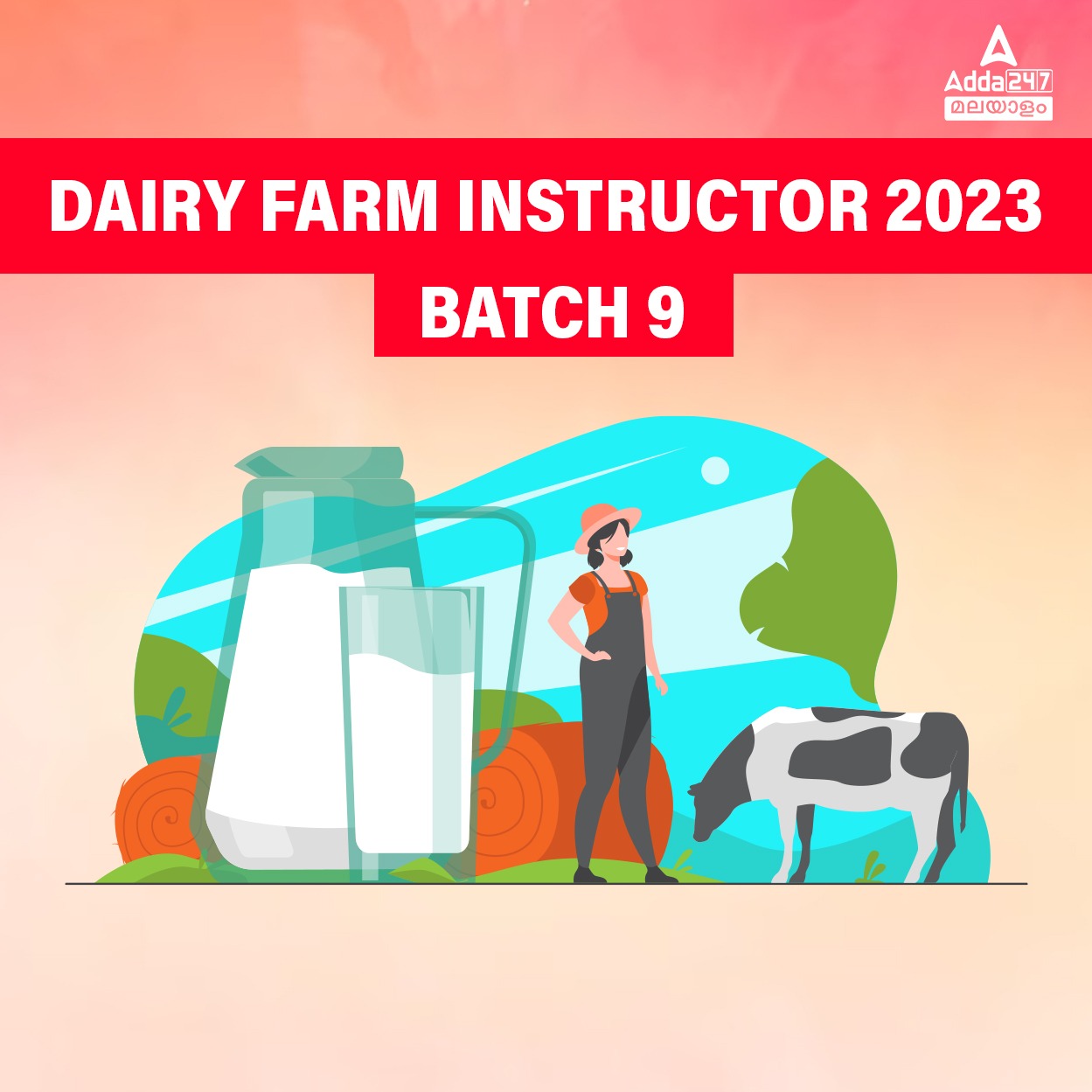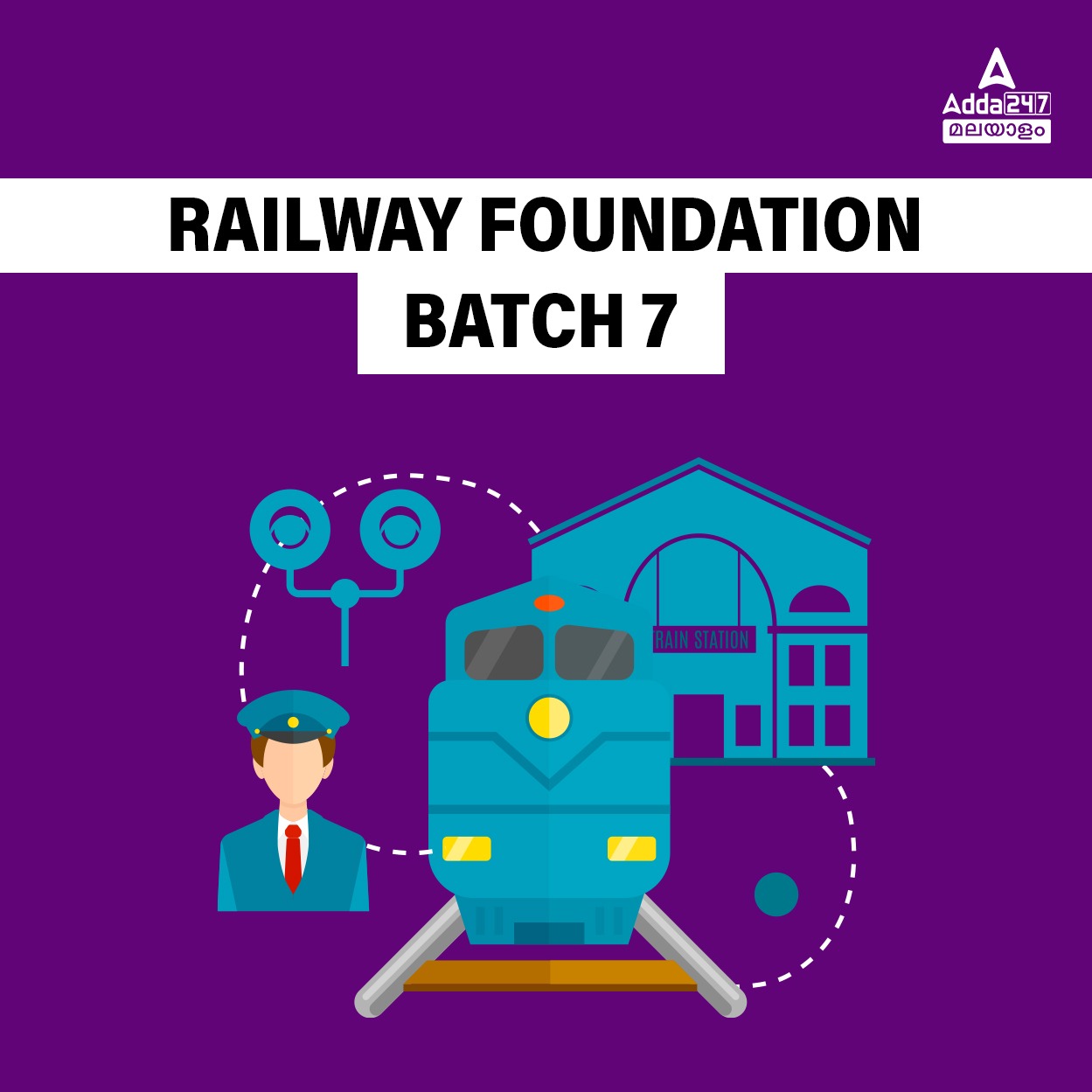Table of Contents
കേരള PSC വൈൽഡ് ലൈഫ് അസിസ്റ്റന്റ് ഗ്രേഡ് II സിലബസ് 2023
കേരള PSC വൈൽഡ് ലൈഫ് അസിസ്റ്റന്റ് ഗ്രേഡ് II സിലബസ് 2023: കേരള പബ്ലിക് സർവീസ് കമ്മീഷൻ കേരള PSC വൈൽഡ് ലൈഫ് അസിസ്റ്റന്റ് ഗ്രേഡ് II സിലബസ് പുറത്തിറക്കി. പരീക്ഷയ്ക്കുള്ള തയ്യാറെടുപ്പുകൾ ആരംഭിക്കാൻ സമയമായി. പരീക്ഷയിൽ വിജയിക്കുന്നതിന്, സിലബസിനെക്കുറിച്ച് വ്യക്തമായ ധാരണ ഉണ്ടായിരിക്കണം, അതിനാൽ കേരള PSC വൈൽഡ് ലൈഫ് അസിസ്റ്റന്റ് ഗ്രേഡ് II സിലബസ് 2023 വിശദമായി വായിച്ച് മനസിലാക്കുക. നിങ്ങൾക്ക് Wild Life Assistant Grade II Syllabus 2023 PDF രൂപത്തിൽ ഡൗൺലോഡ് ചെയ്യാം.
വൈൽഡ് ലൈഫ് അസിസ്റ്റന്റ് GR. II പരീക്ഷാ സിലബസ് 2023: അവലോകനം
ചുവടെ നൽകിയിരിക്കുന്ന പട്ടികയിൽ വൈൽഡ് ലൈഫ് അസിസ്റ്റന്റ് GR. II പരീക്ഷാ സിലബസ് 2023 സംബന്ധമായ എല്ലാ പ്രധാനപ്പെട്ട വിവരങ്ങളും ലഭിക്കും.
| വൈൽഡ് ലൈഫ് അസിസ്റ്റന്റ് GR. II പരീക്ഷാ സിലബസ് 2023 | |
| ഓർഗനൈസേഷൻ | കേരള പബ്ലിക് സർവീസ് കമ്മീഷൻ |
| കാറ്റഗറി | പരീക്ഷ സിലബസ് |
| പരീക്ഷയുടെ പേര് | കേരള PSC വൈൽഡ് ലൈഫ് അസിസ്റ്റന്റ് ഗ്രേഡ് II പരീക്ഷ |
| വകുപ്പ് | കേരള വനം വകുപ്പ് |
| തസ്തികയുടെ പേര് | വൈൽഡ് ലൈഫ് അസിസ്റ്റന്റ് ഗ്രേഡ് II |
| കാറ്റഗറി നമ്പർ | 500/2019 |
| പരീക്ഷാ മോഡ് | ഓൺലൈൻ/ OMR |
| മാർക്ക് | 100 |
| ചോദ്യങ്ങളുടെ ആകെ എണ്ണം | 100 |
| ചോദ്യങ്ങളുടെ മാധ്യമം | ഇംഗ്ലീഷ് |
| പരീക്ഷയുടെ സമയപരിധി | 1 മണിക്കൂർ 30 മിനിറ്റ് |
| ഔദ്യോഗിക വെബ്സൈറ്റ് | https://www.keralapsc.gov.in/ |
Fill the Form and Get all The Latest Job Alerts – Click here
വൈൽഡ് ലൈഫ് അസിസ്റ്റന്റ് ഗ്രേഡ് 2 പരീക്ഷാ പാറ്റേൺ 2023
കേരള പിഎസ്സി വൈൽഡ് ലൈഫ് അസിസ്റ്റന്റ് ഗ്രേഡ് II പരീക്ഷയുടെ വിശാലമായ മാതൃക ഇതാണ്:
- ഒബ്ജക്ടീവ് അടിസ്ഥാനത്തിലുള്ള പരീക്ഷയാണിത്.
- ആകെ 1.30 മണിക്കൂറാണ് പരീക്ഷാ ദൈർഘ്യം.
- ആകെ മാർക്ക് 100.
- ഓരോ ശരിയായ ഉത്തരത്തിനും 1 മാർക്ക് നൽകും.
- ഓരോ തെറ്റായ ഉത്തരത്തിനും 1/3 മാർക്ക് കുറയ്ക്കുന്നു.
| വൈൽഡ് ലൈഫ് അസിസ്റ്റന്റ് ഗ്രേഡ് 2 പരീക്ഷാ പാറ്റേൺ 2023 |
|||
| Parts | Topics | Questions | Marks |
| I | ZOOLOGY | 25 | 25 |
| II | BOTANY | 25 | 25 |
| III | Forestry | 25 | 25 |
| IV | VETERINARY SCIENCE | 25 | 25 |
| Total | 100 Questions | 100 Marks | |
വൈൽഡ് ലൈഫ് അസിസ്റ്റന്റ് ഗ്രേഡ് II കേരള PSC സിലബസ് PDF
വൈൽഡ് ലൈഫ് അസിസ്റ്റന്റ് ഗ്രേഡ് II പരീക്ഷാ തീയതിക്കൊപ്പം, വൈൽഡ് ലൈഫ് അസിസ്റ്റന്റ് പരീക്ഷക്കായുള്ള ലേറ്റസ്റ്റ് സിലബസും കേരള PSC യുടെ ഔദ്യോഗിക സൈറ്റിൽ (keralapsc.gov.in) പ്രസിദ്ധീകരിച്ചു. വൈൽഡ് ലൈഫ് അസിസ്റ്റന്റ് ഗ്രേഡ് II സിലബസ് pdf ചുവടെ നൽകിയിട്ടുള്ള ഡയറക്റ്റ് ലിങ്കിൽ ക്ലിക്ക് ചെയ്ത് ഡൗൺലോഡ് ചെയ്യാവുന്നതാണ്.
Wild Life Assistant Grade II Syllabus 2023 PDF
കേരള PSC വൈൽഡ് ലൈഫ് അസിസ്റ്റന്റ് ഗ്രേഡ് 2 വിശദമായ പരീക്ഷാ സിലബസ് 2023
PART I: ZOOLOGY (25 Marks)
Module I: Taxonomic Principles & Animal Diversity (Marks 3)
- Molecular systematics, DNA barcoding, Nomenclature: Binomial and Trinomial nomenclature; International Code of Zoological Nomenclature (ICZN),
Kingdom Animalia: [Salient features of the Major Phyla of animals and their diversity, classification of each phylum down to classes and examples: Study of animal diversity with typical examples from each class, with emphasis on ecological and adaptive features & economic importance].
Module II: Ethology & Evolution (Marks 2)
- Definition and History of Ethology. Motivation models. Types of behaviors – innate and learnt. Types of learning with examples, Neural mechanisms in behaviour. Direct evidences of evolution – Recapitulation Theory of Haeckel, Geological time scale, Homologous organs, and analogous organs.Lamarckism Weismann’s Germplasm theory, Darwinism, NeoDarwinism, Population genetics and evolution: Hardy-Weinberg Equilibrium, gene pool, gene frequency:
Bottleneck effect and founder effect. Genetic drift and natural selection, punctuated equilibrium and its relevance. Microevolution, Macroevolution, Adaptive radiation -Darwin finches.
Module III: Zoogeography, Biostatics & Bioinformatics (Marks 2)
- Geographical distribution of animals, Zoogeographical realms, Biogeography of India. Role of statistics in life sciences; Sample & Sampling Techniques, Collection of Data, classification of Data, Presentation of Data, Measures of Central Tendency. Biological databases: features of a good database. Classification format of biological databases. Human Genome Project.
Module IV: Biophysics & Biochemistry (Marks 3)
- Microscopy: Light microscope, Phase contrast microscope, fluorescent microscope, Electron microscope. Micrometry, Camera Lucida. Separation techniques: Chromatography, centrifugation, Electrophoresis. Spectrophotometer: Colorimeter. Basic structure, biological importance, and classification of Carbohydrates, Proteins & Lipids. Nucleic acids, Watson – Crick model of DNA, Different forms of DNA, secondary and tertiary structure of tRNA. Enzymes: Chemical nature of enzymes, enzyme activation, enzyme inhibition, allosteric enzymes, isoenzymes, co-enzymes. Glycolysis, Kreb’s cycle, glycogenesis, glycogenolysis, gluconeogenesis, and HMP pathway.
Module V: Physiology (Marks 3)
- Regulation of digestive activity: Nervous and hormonal control, Nutritional requirements – carbohydrates, proteins, lipids, minerals, vitamins sources, and deficiency disorders. Digestion of carbohydrates, proteins & lipids Transport of respiratory gases. Respiratory disturbances. Blood: functions and composition, Types of heart, Human heart, ECG; Common cardio-vascular problems. Types of excretion, urea cycle. Human kidney: Urine formation, Mechanism of concentration of urine, hormonal regulation of kidney function, renal disorders. Hormones- classification and mechanism of hormone action. Major endocrine glands and their hormones, functions, and disorders. Structure of vertebrate skeletal muscle, Mechanism of muscle contraction:
Spermatogenesis, oogenesis, gonadal hormones, and their functions. Hormonal control of human reproduction – Female reproductive cycles. Ultrastructure of the neuron. Nerve impulse production, the transmission of impulse along the nerve fiber, interneuron (synaptic) transmission. Neural disorders.
Module VI: Immunology & Cell Biology (Marks 3)
- Innate and acquired immunity, passive and active immunity. Immunization, Vaccines. Mechanisms of innate immunity.Cells of the immune system. Lymphoid organs Monoclonal & polyclonal antibodies. Hypersensitivity, types of immunity: humoral and cell-mediated immunity. Cell structure and functions: Plasma membrane, Endoplasmic reticulum, Ribosomes, Golgi bodies, Lysosomes, Mitochondria, Cytoskeleton, Microbodies.
Module VII: Molecular Biology, Genetics & Biotechnology (Marks 3)
- DNA as genetic material, Modern concepts of the gene. Structure and types of DNA & RNA. DNA Replication, DNA repair, Gene and genetic code, Transcription, and Translation. Mendelian Genetics, Allelic & Non Allelic interaction of genes. Multiple alleles, Sex determination, Recombination and Linkage, Sex Linked inheritance, Autosomal abnormalities, Sex chromosomal abnormalities, Single gene disorder, Autosomal single gene disorder, Inborn errors of metabolism. Recombinant DNA Technology: Cloning vectors. Blotting Techniques. DNA Fingerprinting
Module VIII: Ecology & Biodiversity Conservation (Marks 6)
- Ecosystem: Components (Abiotic and Biotic), Functions, limiting factors, Biogeochemical cycles, Renewable and Non-renewable resources. Population ecology: Properties of Population – Density, Natality, mortality, age distribution, biotic potential, environmental resistance, energy carrying capacity. Population growth forms (J and S curves). Emigration, immigration, migration, and population fluctuation. Community ecology: Definition and characters. Community Structure, stratification, Ecotone and Edge effect, Ecological indicators. Community periodicity. Ecological succession- Basic types of
succession. Process in succession. Habitat ecology: Marine, Freshwater & Terrestrial ecology. Population interactions. Biodiversity: Types, concept, and importance. Global environmental issues. National environmental issues. Toxic products and disaster. Local environmental issues. Threats to water resources of Kerala. - Ecological tools and techniques: Commonly used techniques for the study of animal populations. Components of biodiversity, diversity indices, Levels of diversity in community and ecosystem diversity: Alpha, beta and gamma diversities. Hot spots of biodiversity. Hotspots in the Indian region. Biodiversity of Western Ghats. Threats to biodiversity, Threatened fauna- IUCN categories. Conservation of biodiversity and wildlife: conservation measures. Biodiversity conservation strategies, Ex-situ conservation & In situ conservation. Man-animal conflict. Water conservation. Global strategy for conservation. Environmental laws. WWF, CITES, National parks, Sanctuaries, forest types in India and Kerala, mangrove forest.
PART II: BOTANY (25 Marks)
MODULE 1: PLANT SYSTEMATICS AND MORPHOLOGY:
- Types of classification: Artificial, Natural, and Phylogenetic-Cytotaxonomy, Chemotaxonomy, and Numerical Taxonomy-Taxonomic literature- Floras, eFlora, Monographs, Revisions, Journals, and online resources & Databases. Taxonomic literature- Floras, eFlora, Monographs, Revisions, Journals, and online resources & Databases. Cytotaxonomy, Types of inflorescence – Aestivation – Placentation- Floral diagram-Floral formula. Fruit types: Simple, Multiple, Aggregate. Seed structure – dicot and monocot -Seeds: Albuminous, ex-albuminous.
MODULE 2: ENVIRONMENTAL STUDIES AND BIODIVERSITY:
- Ecosystem-components: Biotic and abiotic-Ecological succession -Food chain- Food web- Ecological pyramid -Natural resources- Renewable, Non-renewable-Forest types-reforestation. Ecosystem types: Forest ecosystem, Grassland ecosystem, Desert ecosystem, Aquatic ecosystem (brief account only).
Biodiversity: Concepts, Convention of Biodiversity – Earth Summit-Hot spots of India – North Eastern Himalayas, Western Ghats; Endemism. IUCN categories, RED data book. Hot spots of India – North Eastern Himalayas, Western Ghats; Endemism. IUCN categories, RED data book.
MODULE 3: CELL BIOLOGY:
- Ultrastructure of cell wall, molecular organization of cell membranesNucleic acids – Structure of DNA, types and functions of RNA-Euchromatin and Heterochromatin, KaryotypeSpecial types of chromosomes: Lamp brush Polytene and B – chromosomes-Mitochondrial and plastid DNA, plasmids-Cell division: mitosis, meiosis and their significance-Linkage: A brief account and theories of Linkage- Numerical aberrations- Aneuploidy, Euploidy, Haploidy, Polyploidy-Structural aberrations- deletion, duplication, Inversion, translocation.
MODULE 4: GENETICS:
- Mendelian principles: Mendelian ratios, Monohybrid, dihybrid cross-back cross, test cross-Laws of inheritance. Genetic interactions – Epistasis: Dominant, Recessive, Complementary, Supplementary, and inhibitory genes-Linkage: A brief account and theories of Linkage. Crossing over: Mechanism and theories of crossing over. Multiple alleles-General accounts- ABO blood group-Rh factor.
MODULE 5: PLANT PHYSIOLOGY AND BIOCHEMISTRY:
- Absorption of water-organs of absorption, root and root hair, Imbibition, Diffusion, and osmosis- Plasmolysis- Active and passive absorption-Ascent of
sap-Transpiration: Cuticular and lenticular-hydroponics-aeroponics. Photosynthesis: Photosynthetic pigments, absorption, and action spectra; Red drop and Emerson enhancement effect; the concept of two photosystems; mechanism of photosynthetic electron transport and Factors affecting Photosynthesis, photophosphorylation. Carbon assimilation pathways: C3, C4, and CAM. Respiration: Aerobic and Anaerobic; Glycolysis, Krebs cycle; electron transport system, mechanism of oxidative phosphorylation, pentose phosphate pathway. Growth and Development: Physiological effects of phytohormones–Auxins, gibberellins, cytokinins, ABA, ethylene, and Brassinosteroids.
MODULE 6: MOLECULAR BIOLOGY AND BIOTECHNOLOGY:
- Replication in eukaryotes and prokaryotes, Mechanism of transcription in Prokaryotes and Eukaryotes, translation. Regulation of gene expression in prokaryotes (Lac and Trp. Operons)- Tissue culture: Introduction, sterilization procedures, explants, culture media – composition and preparation; Micropropagation. Organ culture: Vegetative OrgansRoot, Shoot, Leaf culture (Reproductive Organs-Anther, Ovary, Ovule, Embryo culture. Callus culture, Cell, and Protoplast culture. Somatic hybrids and Cybrids. Gene cloning-Vectors – cloning vehicles (Plasmid, Cosmids, Bacteriophages, & Phasmids) application of r DNA technology. Gene Libraries: Genomic Libraries, cDNA Libraries, Polymerase chain reaction and its applications. Method of gene transfer in plants (Agrobacterium and Microprojectile).
PART III: Forestry (25 Marks)
Forest & Forestry
- Forest – various definitions. Classification of forests – based on the method of regeneration, age, composition, objects of management, growing stock, ownership, and legal status. State of the forests – global, Indian, and Kerala scenario- Distribution, species composition, and characteristic features with
special reference to Kerala. Forestry – definition, history, and development of Indian Forestry. Branches of Forestry and their relationships. Forest types in India and Kerala – systems of classification – Champion & Seth revised classification.
Silviculture
- Silviculture and Silvics- Objectives and scope. Factors of Locality- Climatic-edaphic- topographic and biotic. Regeneration of forests – Natural regeneration from seed. Natural regeneration from vegetative parts – coppice – root suckers. Artificial regeneration –objectives – essential considerations Forest management, policy and legislation Forest Management – Definition, scope, objects, and principles. Organization and control of forest property and personnel. Rotation -definitions-various types of rotations-length of rotations-choice of type and kind of rotation. National forest policies-scope and importance-comparative analysis of forest policies of 1894, 1952, and 1988. Significance and provisions of Indian Forest Act 1927, Wildlife Protection Act 1972 and amendments, Forest Conservation Act 1980, and KFA 1961.
Wildlife
- Wildlife – Definition and values of wildlife. Behaviour of wild animals. Adaptations of wild animals – aestivation, hibernation, torpor, and diapause. IUCN revised the red list categories and criteria. Wildlife census – Purpose and techniques. Direct and indirect methods. Threats to wildlife. Ex situ and In situ methods of conservation. Protected areas – concept and design. Protected area network in India and in Kerala. Central Zoo Authority of India. Introduction and reintroduction of species. Wildlife corridors. MAB and CITES. Human-Wildlife conflict – Reasons, social and economic dimensions-Mitigation and preventive measures- Conflict management in protected areas. Wildlife rescue and Rehabilitation- Basic equipments and field gears. Basic procedures
in capturing, handling, and releasing of wild animals with minimal stress. Immobilization of wild animals – use of tranquilizers. Translocation of animals. Zoonoses- Concept-Definition-TypesImpacts-Factors of spread-Control. Prevention and control of important zoonoses of wildlife and public
health significance.
PART IV : VETERINARY SCIENCE (25 Marks)
1. Veterinary Anatomy and Physiology (3 marks)
- Comparative anatomy of bones and joints of the body of herbivores, carnivores, and omnivores- Comparative anatomy of organs of digestive, respiratory and urogenital systems – Digestion in monogastric and polygastric animals – Reproduction – Thermoregulation – Wild animal behavior
2. Livestock Production Management (5 marks)
- Taxonomy of important wild animals – Status and conservation practices of wildlife in India – Management of wild animals – Restraining, capture, handling and physical examination of wild animals – Protection of wildlife in nature and captivity – Acts and rules related to wild animals – Human and animal welfare in relation to the ecosystem and environmental factors – Animal welfare during natural calamities and disaster management.
3. Animal Nutrition (4 marks)
- Feeding habits and feeds of wild animals – Nutrient requirements of ruminants, non-ruminants, and carnivores – the importance of nutrients in wild animal production and health
4. Veterinary Pathology, Microbiology, and Parasitology (5 marks)
- Pathological changes affecting digestive, respiratory, musculoskeletal, and urogenital systems of wild animals – Pathology and diagnosis of important bacterial, viral, and parasitic diseases of wild animals
5. Veterinary Clinical and Preventive medicine(5 Marks)
- Health and diseases-Infectious diseases caused by bacteria, viruses, parasites, fungus prevention, and control-vaccinations- diseases affecting digestive, respiratory, musculoskeletal and urogenital systems of wild animals- Metabolic and deficiency diseases and their control
6. Veterinary Public Health and Epidemiology (3 marks)
- Epidemiology, clinical manifestations and management of zoonotic diseases – Role of wild animals and birds in the transmission of zoonoses – Environmental pollution
7. Animal – Man Conflict
8. Rescue and Rehabilitation of Orphan or displaced animals
9. Importance of Our Health
| Kerala PSC Wild Life Assistant Gr. II – Related Article | |
| Kerala PSC Wild Life Assistant Gr. II Exam Date 2023 | Kerala PSC Wild Life Assistant Grade II Syllabus 2023 |
Adda247 Malayalam Youtube Channel |
Telegram group:- KPSC Sure Shot Selection











